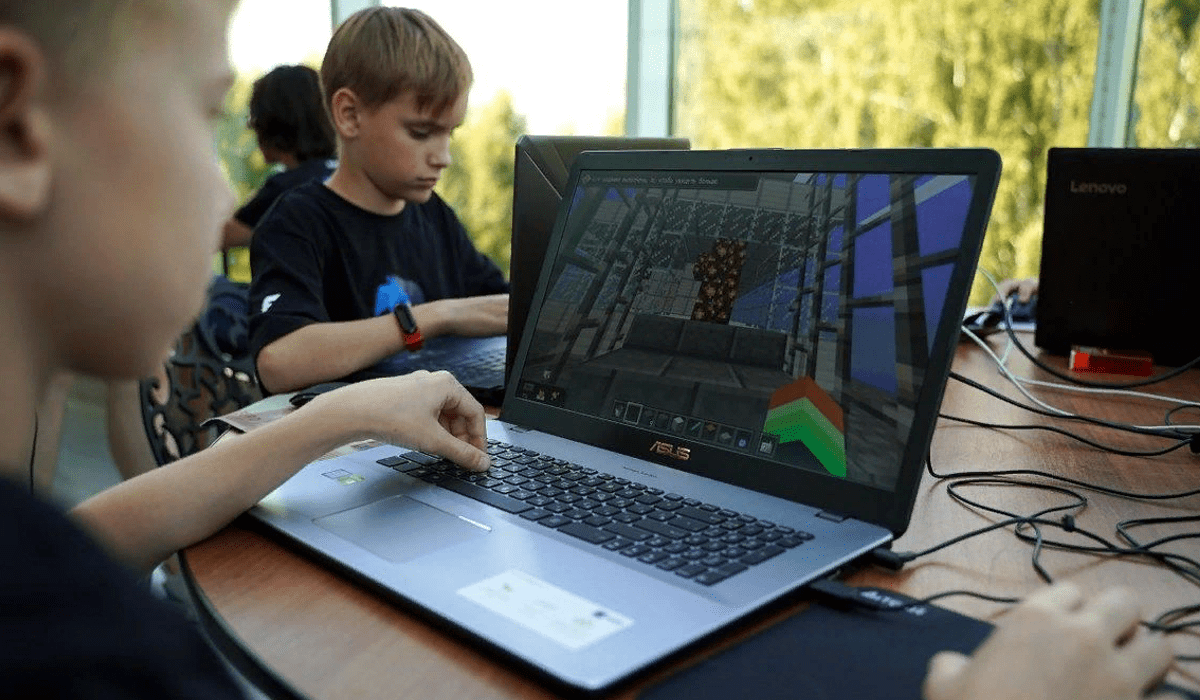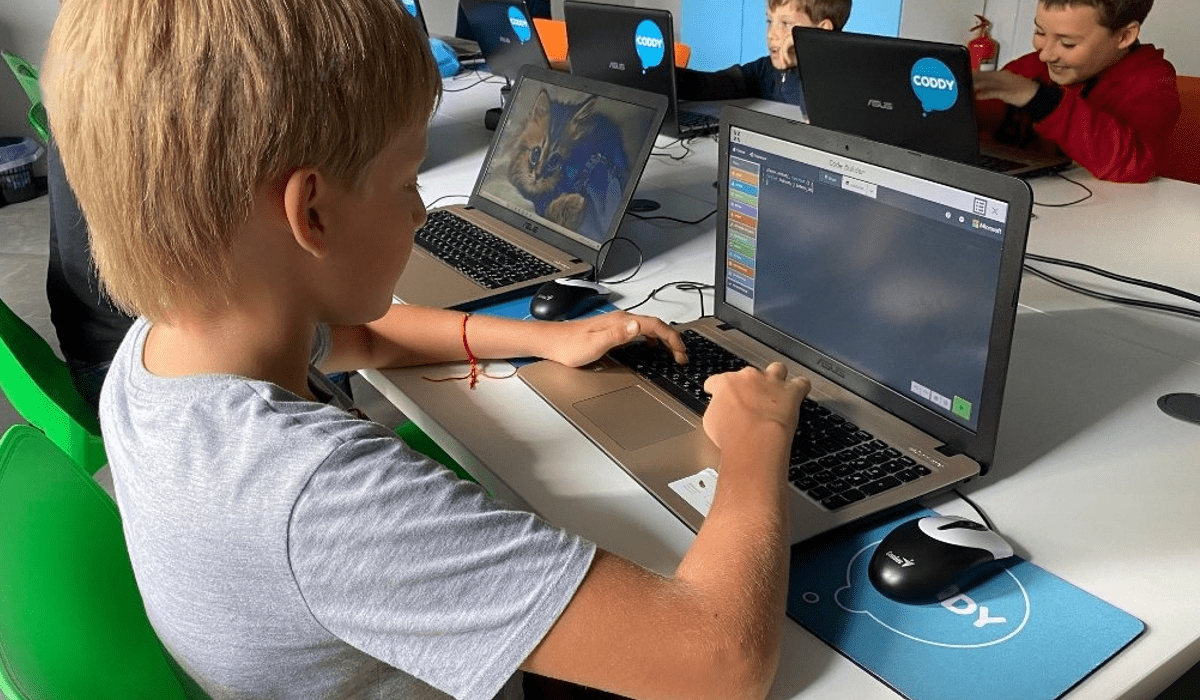We talked about what kind of room is needed for a programming school, how to choose it and how to furnish it in a previous article. It's time to talk about technical issues: computers, laptops and important hardware, without which a productive lesson in programming school will not do.
Computer equipment
As a rule, there are personal computers in computer classes. They are easy to maintain and allow you to put the screen at a safe distance in front of the user's eyes without removing the keyboard far away.
A laptop is also a great option. It is mobile and does not take up much space, which allows students to sit, for example, at one large table. This is a great option for a small room and a group work format where the teacher and students interact in a circle.
A desktop computer or laptop is a matter of convenience and organization of the classroom. This does not affect the operation of programs and learning ability in any way. The main thing is that the model is comfortable and suitable for children.

Children in CODDY schools are more likely to study on laptops.
Computer and Laptop Specifications
You don't need an expensive computer with special features to program. Professional programmers work only with devices with more RAM for serious projects – 16 GB and above. But for Scratch, graphic editors, game engines, games and other programs in which children study, a standard computer or laptop is enough.
When choosing devices, it is worth starting from the courses that you offer – the requirements vary from program to program. But, in general, the characteristics are as follows:
1. OC: Windows 10 or macOS 10.10 and above
The Windows system is more versatile: it is more familiar to most users and supports more programs for different courses, so we recommend choosing it.
2. RAM: 8 GB
As much as possible: 16 GB will be enough for complex projects. The absolute minimum is 4 GB.
3. Processor: Quad-core
For example, Intel Core i5 or i7, or similar AMD.
4. Graphics card: GTX, AMD or GeForce
In laptops, it is built in in advance. For desktop computers, the cards of the listed companies of the tenth or twentieth generations (the first two digits in the model number) and with a performance characteristic (the second two digits) of ~ 60 are suitable. For example, GTX 1070 or GeForce 2060.
The video card is practically not involved in the coding itself, but if you program games or work with 3D, you can't do without a good video card.
Computers store not only the necessary applications for programming and other courses, but also student projects. You will hardly need a terabyte of memory – the main thing is that everything you need fits and does not affect the operation of the device.
6. Screen: 20 inchesChoose large screens with a diagonal of at least 19 inches and a resolution of Full HD (1920 x 1080 pixels). The picture should be bright and clear – just like all modern devices.
The screen refresh rate for a child, according to Rospotrebnadzor, should be maximum – 100 Hertz or more. Such screens change 100 or more frames per second, which provides a very smooth image.
But practice shows that this can even be a lot: most screens support only 60 Hertz. This is the standard required for office work and regular computer use, and it will be enough for coding and graphic work.
Keyboards, mice and other accessories
The programming school needs keyboards (if you have chosen personal computers) and computer mice. Depending on the course, you may also need headphones and graphics tablets. Let's go in order:
- The mouse should fit comfortably in a child's hand. Any standard shape and size will do. It is better to take wired ones so that they do not get confused and are always near your computer.

You can pick up a mouse pad with the school logo.
- The keyboard must contain all the necessary keys: function keys F1-F12, cursor keys, etc. and be quiet. Choose quiet keyboards so that students don't interfere with each other.
- Headphones should not be too heavy and maintain excellent sound quality, especially if you work with sound design.

We do not recommend playing with the shapes and backlights of the headset – they can be uncomfortable and distract students.
- A graphics tablet is the same standard input device as a keyboard and mouse. You may need it if you work with graphic design and 3D modeling.
It is worth choosing a tablet based on the size of the computer or laptop screen. It is good if the dimensions of the screen and the working area of the tablet match or the tablet will be smaller. This way the child will get used to it faster and learn how to draw and model while looking at the monitor screen. - A graphics monitoris a graphics tablet with a screen. This option is more expensive, but clearer: it is easier for children who used to draw only on paper to get used to it. But for a school that does not specialize entirely in digital drawing, ordinary graphics tablets are also suitable.
The standard pen sensitivity of graphics tablets and monitors is 8192 levels. This is more than enough for comfortable work for both beginners and professional designers.
Auxiliary technical equipment
In order for the lessons to be effective and effective, you will need not only a dozen computers and a white board.
- An interactive whiteboard is the best option for any activity. The teacher and students can edit the code and other projects right on the big screen;
OR
- the projector is universal for presentations. If there are no white walls in the classroom, you will have to buy a screen for the projector.
- The TV is too small to protect student projects, but it is great for showing educational materials.
- Speakers for the presentation of video and audio materials, educational projects of students at the end of courses, etc. One pair per class is enough.
- Extension cords are needed to connect all computers and laptops in the classroom. If your students study together at one large table, place them directly on the table or in any safe place where they will not interfere with anyone: accumulations of wires underfoot can be traumatic.

Wires and devices for them can be hidden under tables.
Conclusion
Good computers for programming differ slightly from standard ones. But when equipping a classroom for a computer school, you should take into account which courses will be held in it, and design it according to the tasks of the school and accepted norms.
The CODDY team will help you open and equip your programming school. We work with franchisees and branches in more than 190 cities and 24 countries.